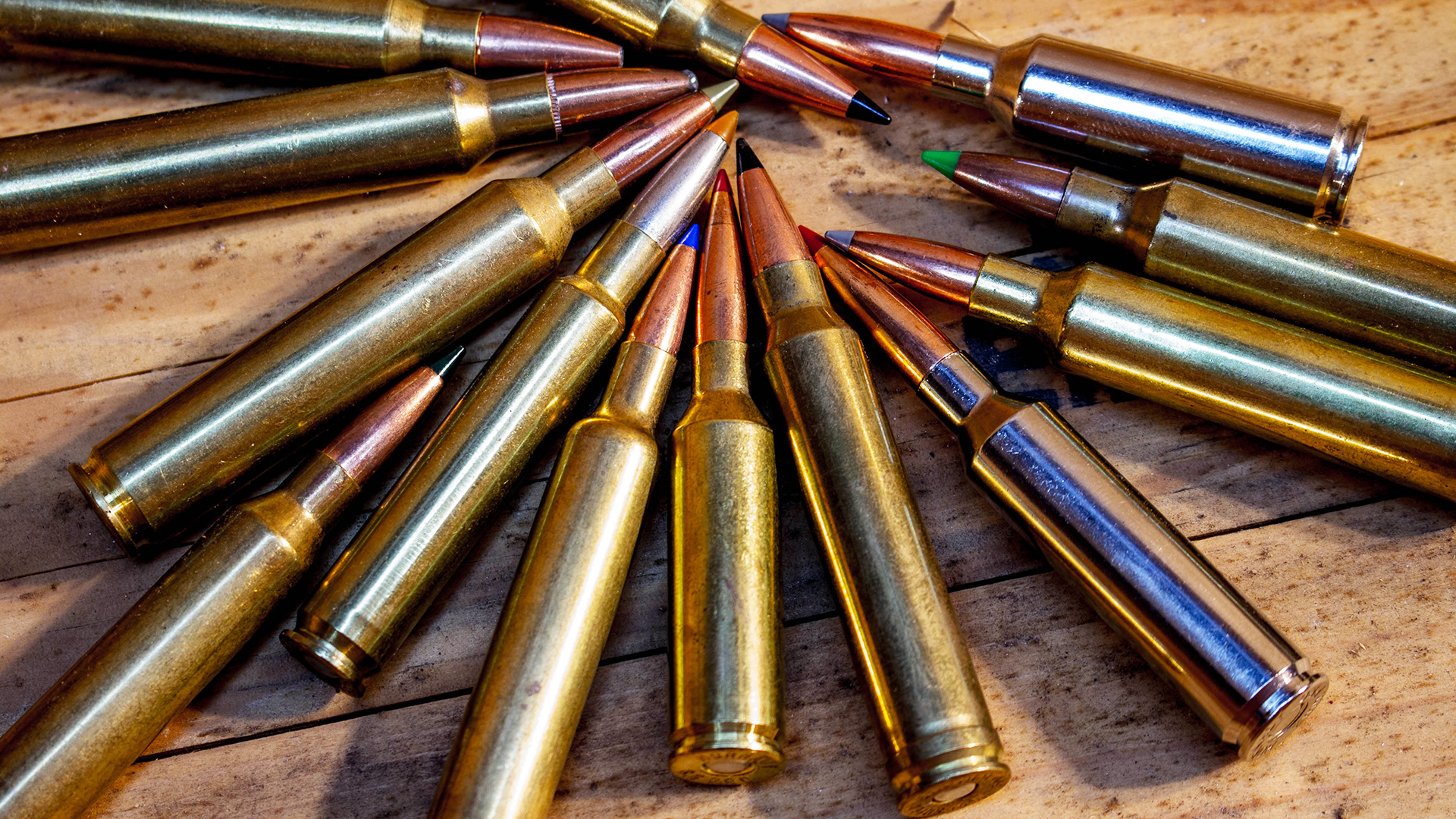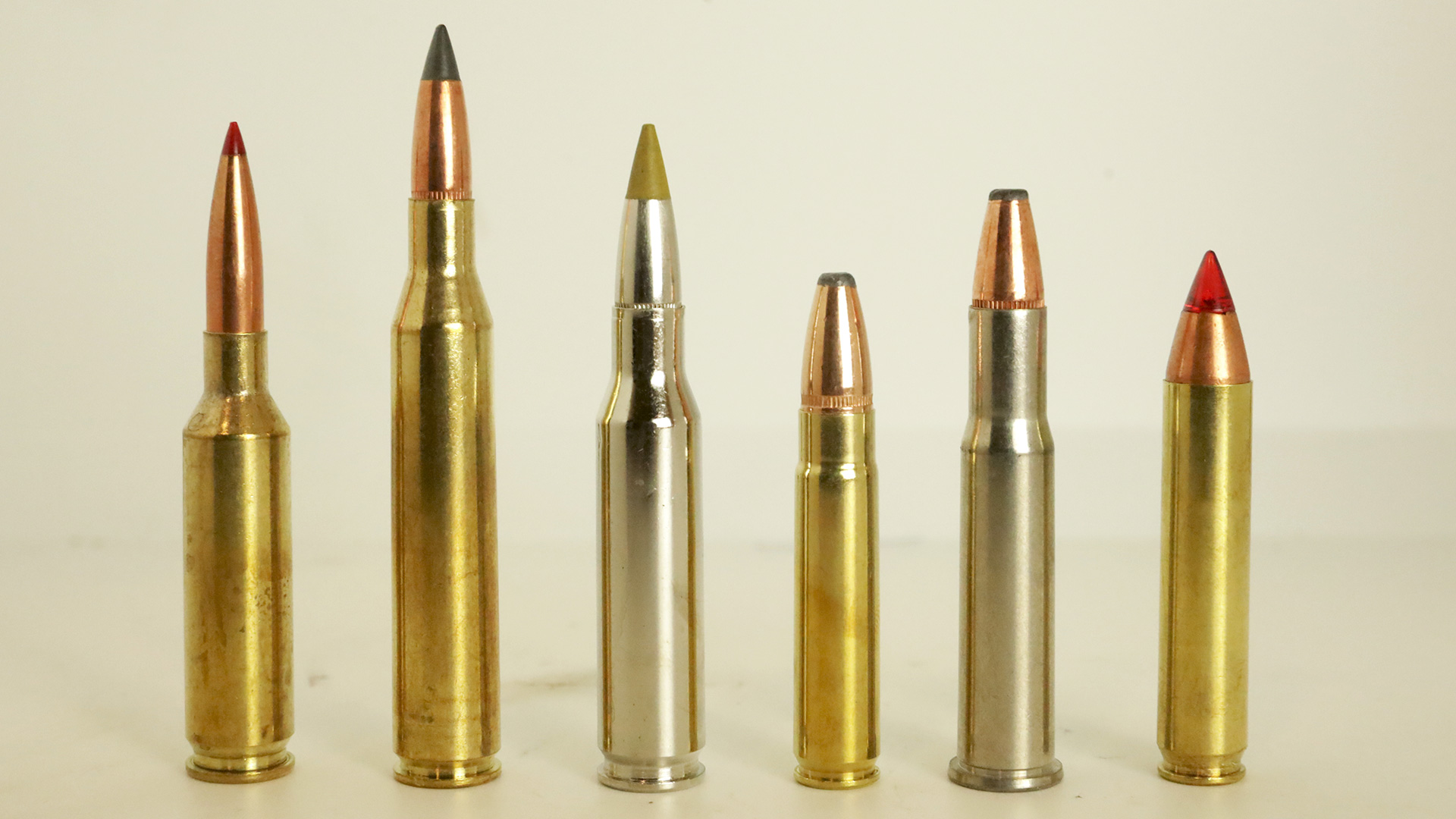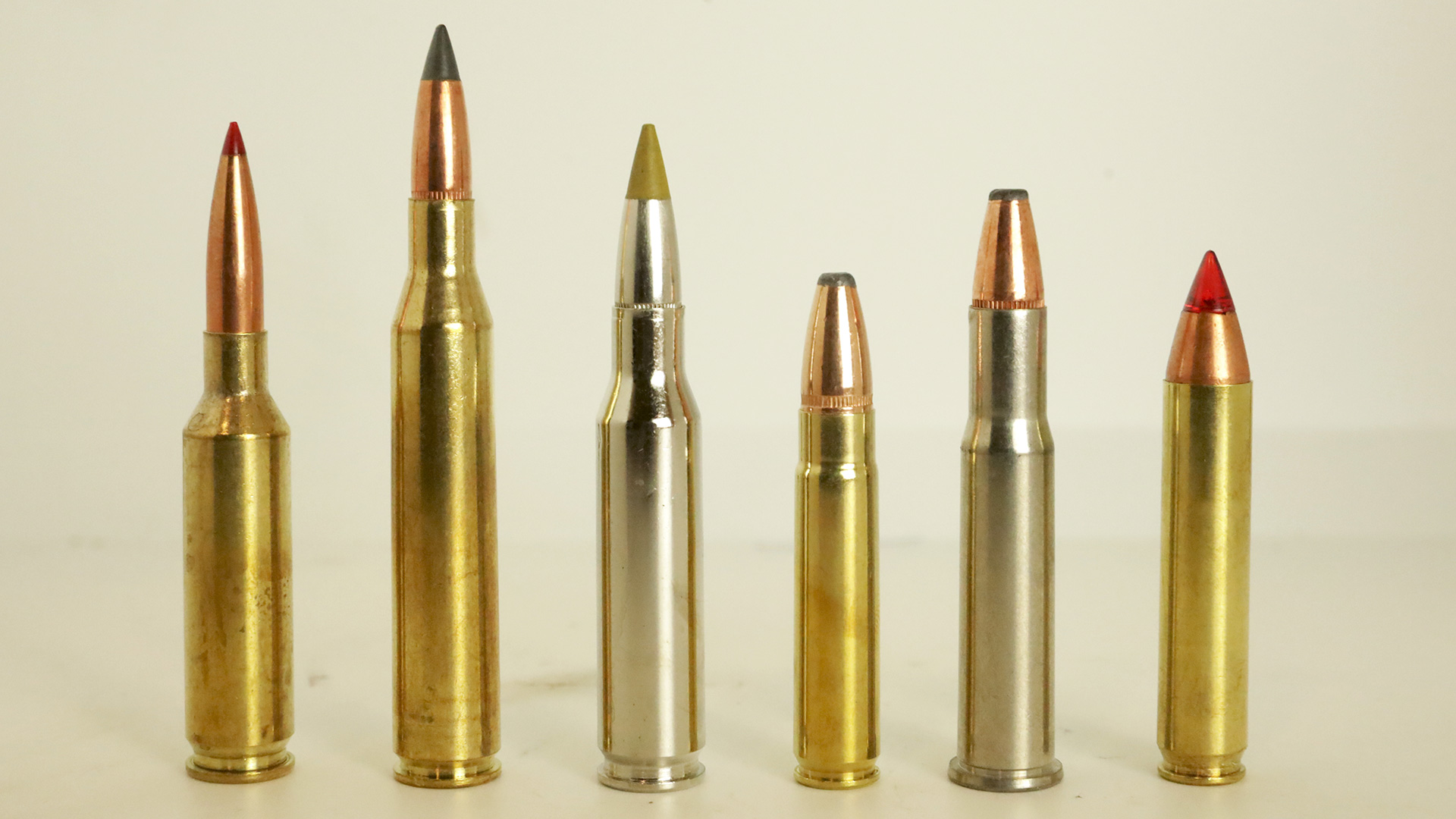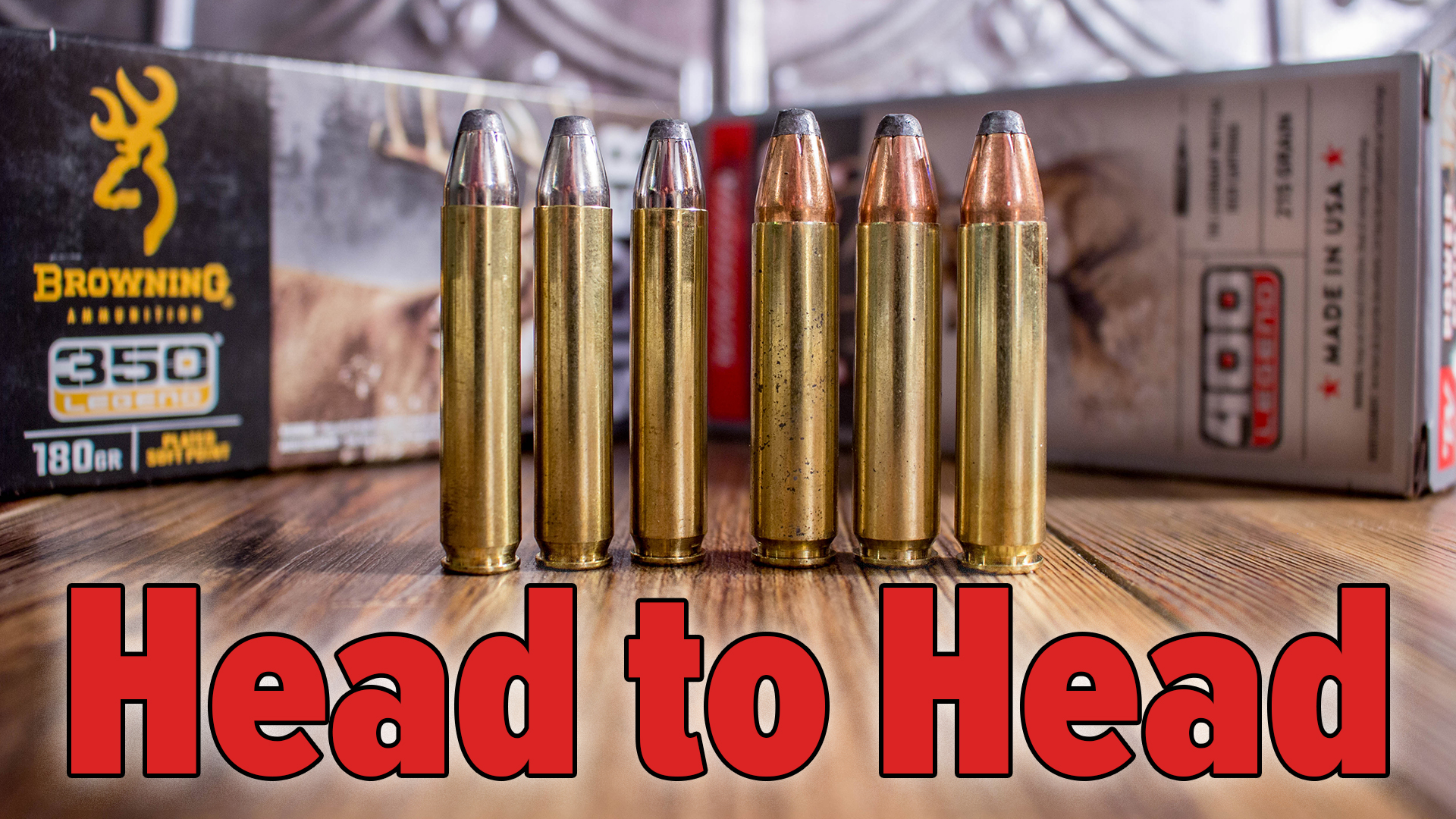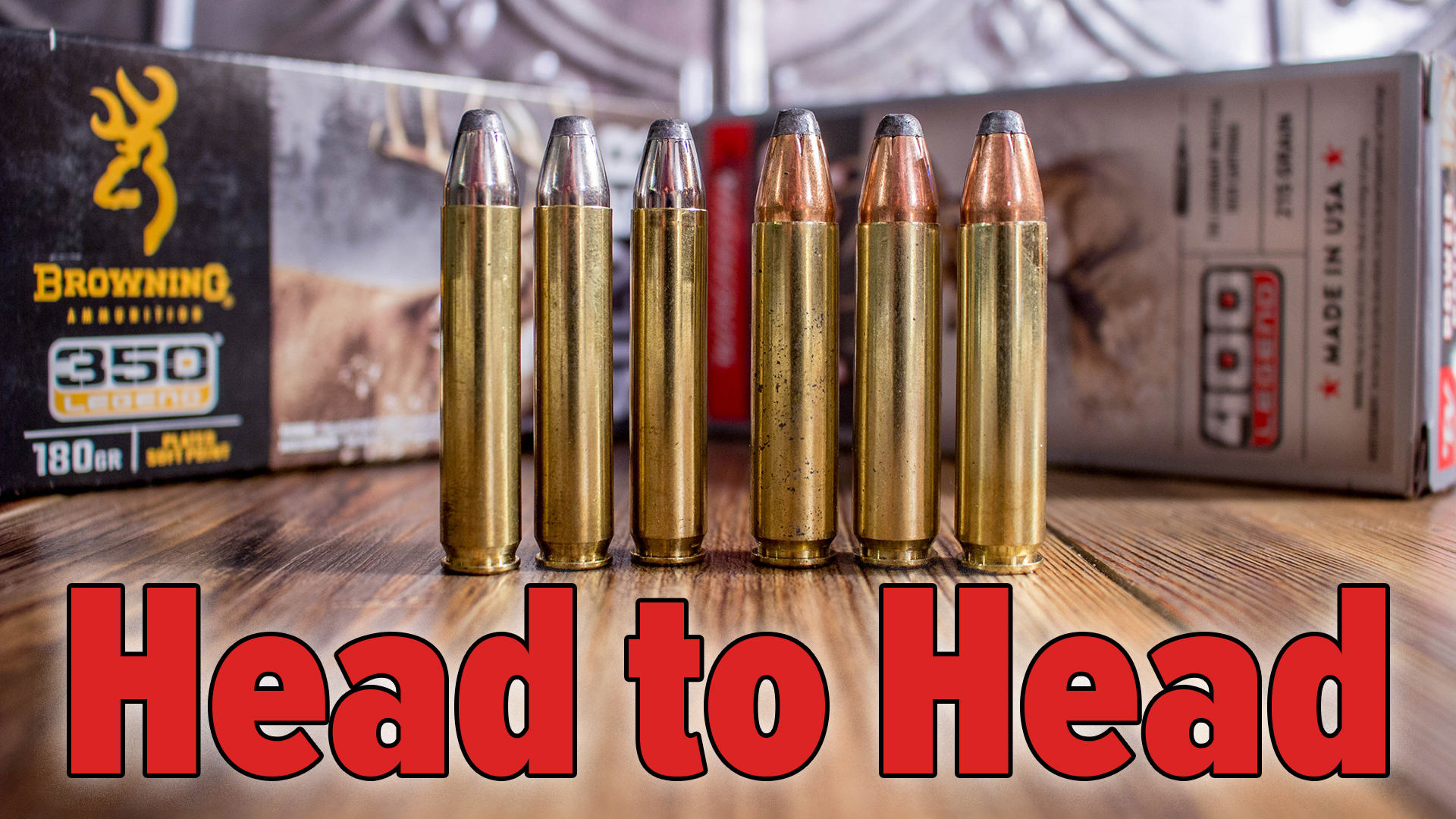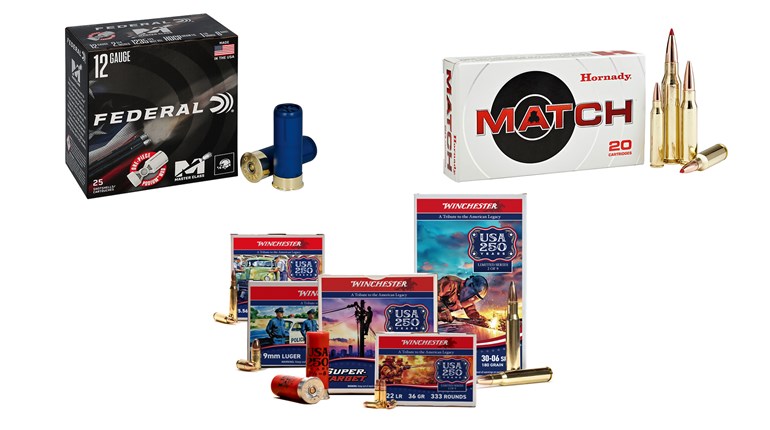
Once upon a time, the firm of John Rigby & Co. developed a 3 ¼″ cartridge, designed to launch a 480-grain bullet of .458″ diameter to a muzzle velocity of 2150 fps, and the hunting community was happy. The .450 Nitro Express was deemed to be the perfect cartridge for the dangerous game of Africa and India. Then, during the desolation of British ammunition, supplies of .450 NE ammunition withered, and many fine double rifles were left to starve. The hunting community was saddened.
The American firm of Winchester came to the rescue, filling the void left by the increasing absence of the .450 Nitro Express, by modifying the most-excellent .375 Holland & Holland Belted Magnum and mating it with the .458”-diameter bullets of the .450 NE. The .458 Winchester Magnum, released to the sporting public in 1956, offered the ballistic formula of the .450 NE in a bolt-action, affordable rifle. The .458 Winchester Magnum is a straight-walled case, using the H&H belt of brass for proper headspacing. Driving a 510-grain bullet at the same muzzle velocity of 2150 fps, the .458 Winchester Magnum was a success—at least in theory.

Winchester developed its ballistic data for the cartridge in a 26″ barrel, which is a bit long for a dangerous game bolt-action rifle, so the actual ‘street’ velocities never made the advertised 2150 fps. Report of muzzle velocities as low as 1850 fps were not uncommon, and that makes a huge difference in performance on dangerous game. Couple that with the fact that the Winchester case—shortened from the H&H 2.85″ length down to 2.50″ to work in a .30-06-length action—left little room for the powder charge, and there was a real problem with the cartridge. Field reports of squib loads from a result of the compressed powder coagulating in the African heat, caused more than a few dangerous situations; there were reports of bullets actually bouncing off an elephant’s hide—the problem was real.
In 1959, in Mozambique, a California hunter named Jacques P. Lott—known to his friends as Jack—had a terrible run in with a rogue Cape buffalo. He shot the beast with the then three-year-old .458 Winchester Magnum, and found himself airborne, bruised and bleeding as a result of being tossed by Black Death. He survived to tell the tale, but brooded on the fact that he needed to build a better mouse trap. If the .450 Nitro Express rightly earned a reputation as an excellent choice for all-around big-game hunting, why did the .458 Winchester Magnum fail him? The bullets were dependable, so that left but one problem: the case capacity. Jack pondered the idea, and as the story goes, he drew the blueprints for what would become the .458 Lott on a napkin in a diner. The concept? To boost the velocity of the (then) anemic .458 Winchester Magnum by lengthening the case to the full H&H 2.85″, allowing for greater powder capacity.

Experiments were conducted with varying degrees of success. The first was to use a .375 H&H case, in a lengthened .458 chamber, loaded with a heeled .458″ bullet which tapered down to .375″. The resulting case opened up to the necessary .458″, but the fire-forming process shortened the case to 2.80″. That case-length would become the standard for the .458 Lott, which received SAAMI approval in 1989, after being produced by Col. Arthur Alphin’s A-Square firm. Not only did the new case solve the original issue, but offered a velocity increase to 2300 fps with 500-grain bullets.
The .458 Winchester Magnum plodded on, and the ship seems to be righted. Most modern factory loads still fall shy of the 2150 fps mark, but to be honest, so do many of the .450 Nitro Express cartridges. I feel that anything between 2050 and 2100 fps is a fair shake for the .458 Winchester, and a good bullet at those velocities will most certainly kill even the biggest beasts cleanly. The .458 Lott has certainly earned its reputation as a wonderful big-game cartridge; despite the fact that a longer receiver is required, it is an excellent choice for any game that walks.

So, which makes the better choice for a prospective big-game hunter? I feel that, hands down, the .458 Lott is a vastly superior cartridge when it comes to hunting animals that require a cartridge of this class. Firstly, it avoids the overly-compressed powder charges that come with the .458 Winchester; though it may seem silly, the 0.30″ increase in case length gives just the proper amount of case capacity to avoid powder issues. I’ve spent a considerable amount of time handloading for both, and trying to get the .458 Winchester to deliver muzzle velocities above 2050 or 2075 fps can be a real chore, especially in the shorter-barreled rifles.
When handloading for the .458 Lott, I can easily obtain velocities in the 2200 to 2250 fps range—a bit below factory loads, yet completely effective in the field. Secondly, the excellent monometal bullets, which are all longer than their lead-core counterparts, take up more space in the case, and will further compromise the already limited .458 Winchester case. The additional capacity of the Lott makes using these bullets, which give phenomenal penetration, much easier. Simply put, the Lott gives the shooter more options than does the .458 Win. Mag.

I know a good number of Professional Hunters across Africa who’ve had their .458 Winchester rifles converted to .458 Lott; one of the benefits of this maneuver is that .458 Winchester Magnum ammunition can safely—and rather accurately—be fired out of a .458 Lott chamber. With hindsight, I firmly believe that Winchester would have used the 2.85″ case when developing the .458 Winchester Magnum; it’s just a smarter design across the board. It easily achieves that magical 5,000 ft.-lb. energy mark, has enough horsepower to give plenty of penetration—even on the huge pachyderms—and runs at relatively low pressures. While the .450 NE made its bones with a 480-grain bullet, the Lott can easily handle the 500 and even 550-grain bullets, again giving the shooter more flexibility.
Though it’s a relative newcomer on the scene, approaching its 30th anniversary on the market, it is one of the most sensible and economical choices for a big-game hunter who appreciates the benefits of a .458″-diameter bullet. Thank you Jack, for your design.
Looking for previous installments of our "Head to Head" series? We've got you covered.
• 7mm Rem. Mag. vs. .300 Win. Mag.
• .243 Winchester vs. 6mm Remington
• 7x57mm Mauser vs. 7mm-08 Remington
• .25-06 Remington vs. .257 Weatherby Magnum
• .338 Winchester vs. .375 H&H Magnum
• .30-30 Winchester vs. .35 Remington
• .257 Roberts vs. .250-3000 Savage
• .270 Winchester vs. .280 Remington
• .35 Whelen vs. 9.3x62mm Mauser
• .416 Rigby vs. .416 Remington Magnum
• .308 Winchester vs. .30-06 Springfield
• .22 Nosler vs. .224 Valkyrie
• .300 Win. Mag. vs. .300 WSM
• .223 Remington vs. .22-250 Remington


